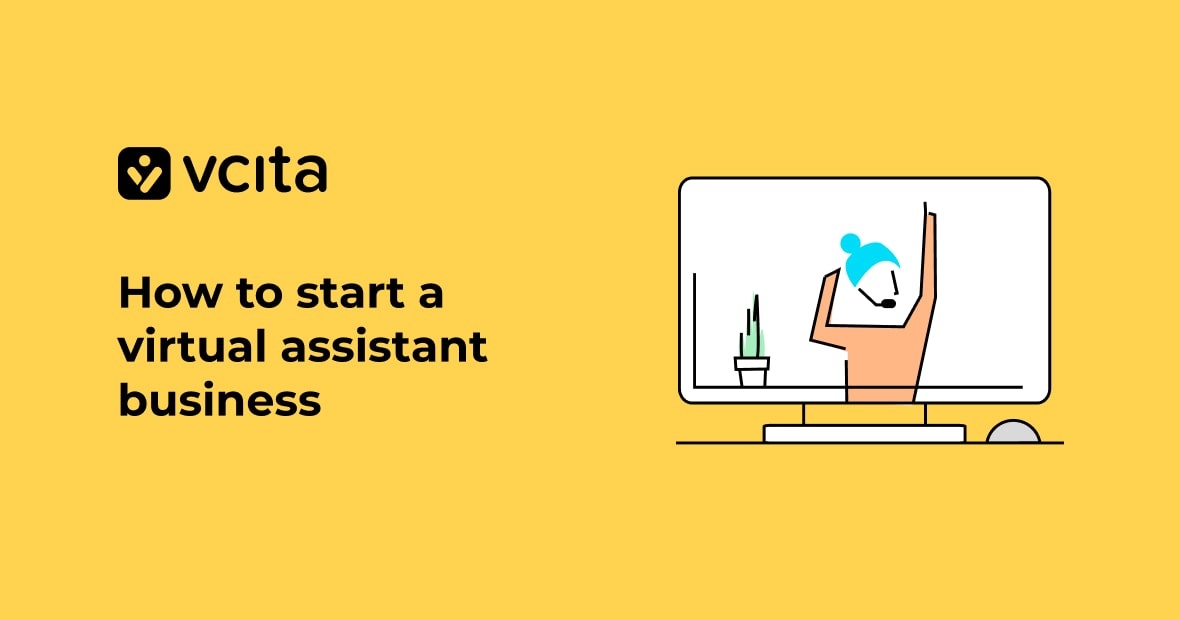If you have a knack for organization and would prefer to work from home, starting your own virtual assistant business could be the perfect fit. But before you dive into your new business, make sure that you know what steps to take to set it up for success.
Learn how to structure your virtual assistant business, decide what services to offer, and build your client base, to start a virtual assistant business from scratch. Follow this guide to start your own virtual assistant business and begin working for yourself.
Structuring your virtual assistant business for success
The business structure you choose for your virtual assistant business will determine how you operate and pay taxes, so it’s important to understand your options and make an informed decision. The two most common options for a virtual assistant business are a sole proprietorship, or a limited liability company (LLC).
Sole proprietorship
This is the simplest business structure, where you are the sole owner and employee. You report business income and losses on your personal tax return. While easy to set up, you have unlimited personal liability for business debts and legal claims.
LLC
A limited liability company (LLC) provides legal protection for your personal assets while allowing pass-through taxation. Setting up an LLC for a virtual assistant business requires registering with your state, so there’s more paperwork involved, but it creates a separation between your business and personal finances.
Laying the groundwork to start your virtual assistant business
Once you’ve decided on your business structure, there are a few more steps to take to get your VA business up and running.
- Choose and register your business name
You want a memorable name for your business that helps attract customers. Pick a name that conveys your virtual assistant business and the services you offer, such as “Efficient Admin Solutions.” Check if the domain name is available and register your business.
- Determine your services
There are many different services that VAs can offer. Common administration services include:
- General administration like emailing, data entry and calendar management.
- Project management to keep clients and teams organized.
- Social media management for creating and posting content.
Start with areas where you have the most experience, and then expand from there as your skills and experience grows.
- Set your rates
Deciding on pricing is always a challenge for small business owners. Research the local market rate for virtual assistants in your area, and determine an hourly rate that is competitive yet still allows you to make a profit. As a new VA, you may need to start on the lower end, but you can increase your rates over time.
- Gain skills and tools
Get the tools and training you need to start a virtual assistant business. Look for software to help manage clients, projects, invoicing, and more. Stay up-to-date with courses on productivity, cybersecurity, and relevant technical skills. For example, if you’re looking to enhance your knowledge of cloud platforms like Azure, consider reputable platforms like PrepAway. They offer up-to-date materials to ensure you have access to the latest information.
- Build your customer base
Now, take some steps to attract clients. Create a basic website to tell potential clients about your services, experience, and rates, and include a contact form so people can easily get in touch with you. Stay active on online job boards and social media, and use word-of-mouth and email marketing.
The daily operations of a virtual assistant business
As a VA business owner, your day-to-day work will consist of finding and serving clients, managing projects, and performing various administration services. Let’s break down what you might need to do on a typical day.
Finding new clients
A big part of your role will be attracting new clients to build your business. You’ll spend time networking on social media, reaching out to potential clients, and promoting your services. Consider offering a free initial consultation to show your value, determine their needs, and propose an hourly rate for the work.
Managing client projects
You’ll provide support to multiple clients each day, so effective project management is key. Use tools like vcita to keep tasks organized and on schedule. Meet with clients via video chat to get details on projects, priorities, and deadlines, then stay in touch through a client portal, calls, and emails to keep clients informed about your progress.
Performing administration services
A large part of a VA’s role is providing essential administration services to clients. This can be very varied, including managing schedules, travel planning, data entry, email management, document creation or editing, and more. You need to be highly organized and able to switch between different types of work and client accounts efficiently throughout the day.
Email management, for instance, can be time-consuming, but automation tools can help. Tools like Clean Email lets you automate deleting emails and unsubscribing from unwanted subscriptions, freeing up time for more important tasks and improving your efficiency in managing client tasks.
Continuous learning
While experience provides a solid foundation, technologies and client needs are always evolving. Take time each week to strengthen your skills through online courses, tutorials, webinars, and networking with other virtual assistants. Stay up-to-date with tools and software that can make you more efficient and valuable to your clients. Continuous learning and improvement will set you apart in this competitive field.
How to build your client base and grow your virtual assistant business
Now that you’ve set up your new VA business and you’ve decided what services to offer and prices to charge, you’re ready to start marketing the business and attracting clients. Here are some crucial elements for your marketing strategy.
- Polish your business website
As a VA business owner, your website is your digital storefront. It helps establish your professional brand. Use it to clearly communicate what services you offer, your experience, and rates. Include a contact form so potential clients can reach out. For fast and cost-efficient tech support and setup, some small businesses may opt for IT outsourcing to Poland, Mexico, India, etc., without hiring an in-house tech team.
- Nurture your online presence
Set up social media accounts, like Facebook and LinkedIn, and gather emails for an email newsletter list to help market your business. Post regularly about the benefits of working with a VA, share tips on productivity and time management, and write guest blogs on websites your target clients read. This helps to position you as an expert in your field.
- Extend your business networks
Use your social media accounts to engage with your followers and build a relationship with them, to become a trusted advisor. You can also participate in online business groups, reach out to former colleagues, and place ads in local publications so that people know about your business.
- Reach out to potential clients
Don’t wait for clients to come to you. Reach out to small business owners, entrepreneurs, executives and managers. Email them, connect on LinkedIn, or call them, to explain how hiring a VA can benefit their business. Be prepared to discuss your services, experience and rates. Some may become new clients right away, while others may take more follow up.
- Keep growing your client base
Provide excellent service to your first few clients, then ask them to spread the word about your business or write online reviews to help you gain new clients through word-of-mouth marketing. Once you’ve built up a few clients, you can start expanding into other areas like social media management or bookkeeping.
- Continue learning and improving
Continue taking courses and getting certifications to strengthen your knowledge in different areas of business administration. Stay up-to-date with tools that help VAs work more efficiently, and join online communities to learn from more experienced VAs. Take courses on new software, project management techniques, and other skills. The more you can offer, the faster your client base will grow.
Your successful VA business is waiting for you
The day-to-day life of a VA business owner is fast-paced but rewarding, and starting a successful VA business takes dedication and hard work. But by providing high-quality services, and constantly improving your skills, you’ll build a successful virtual assistant business. With hard work and persistence, you can start and scale a thriving VA business that lets you work from anywhere.




























